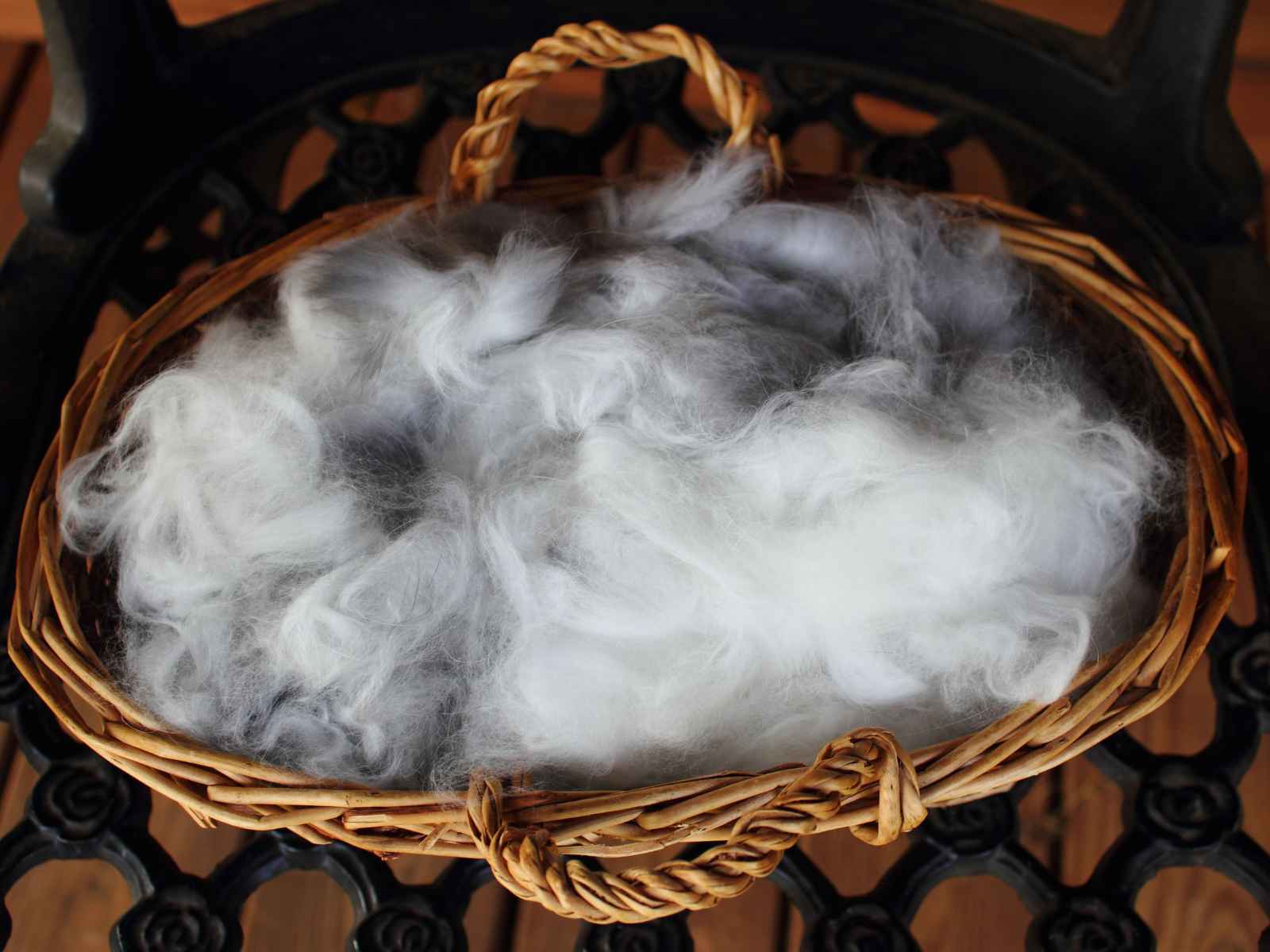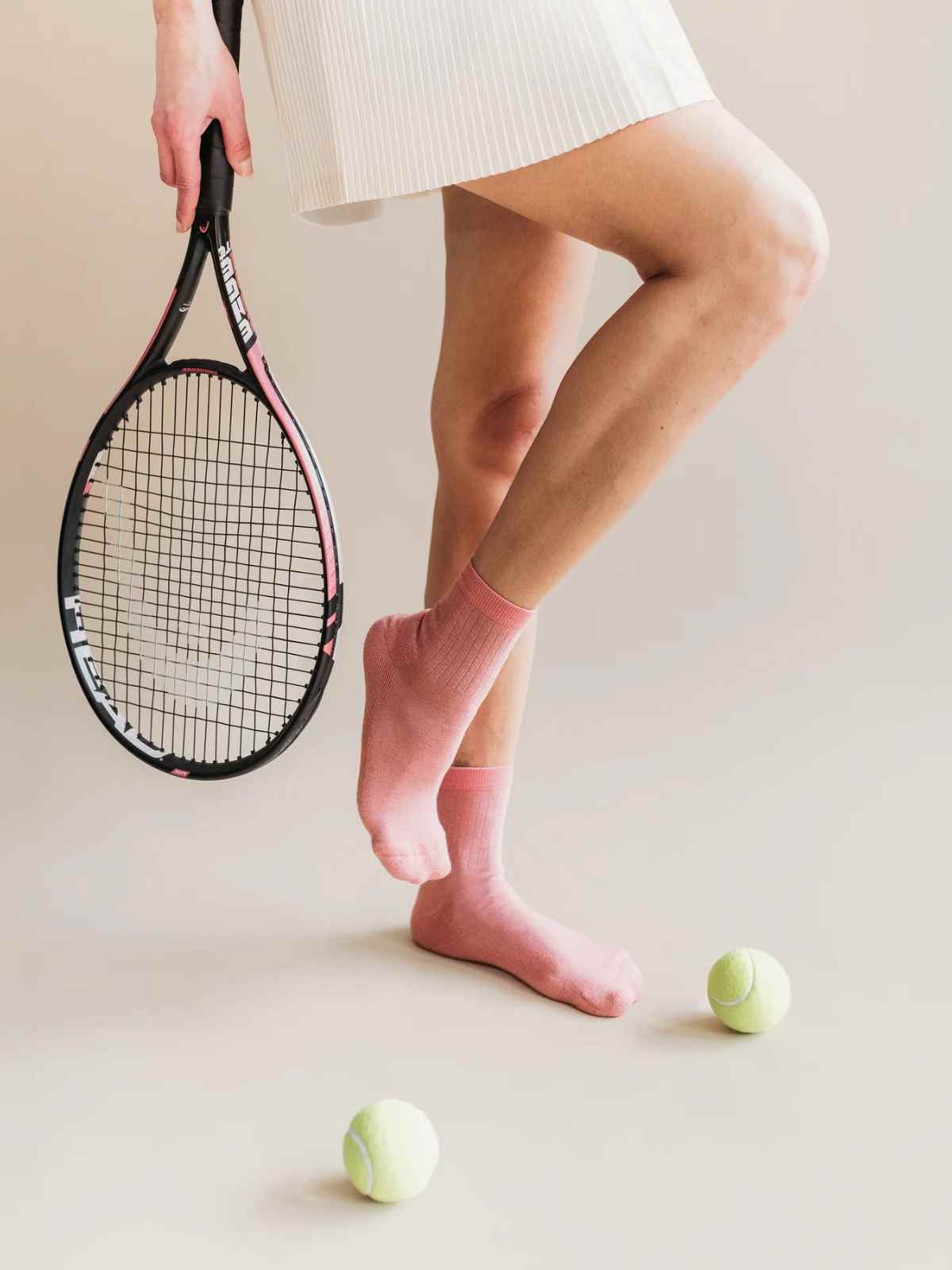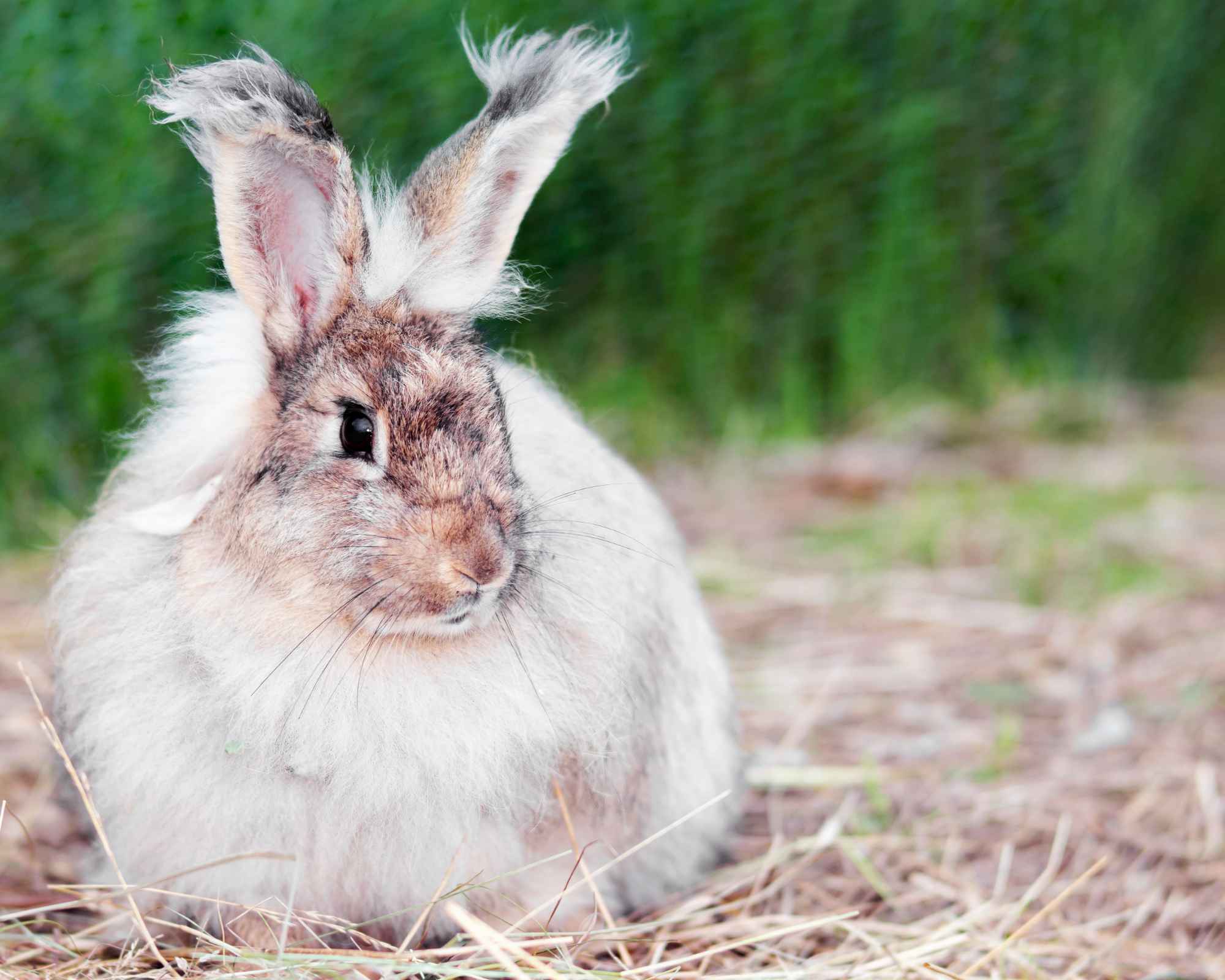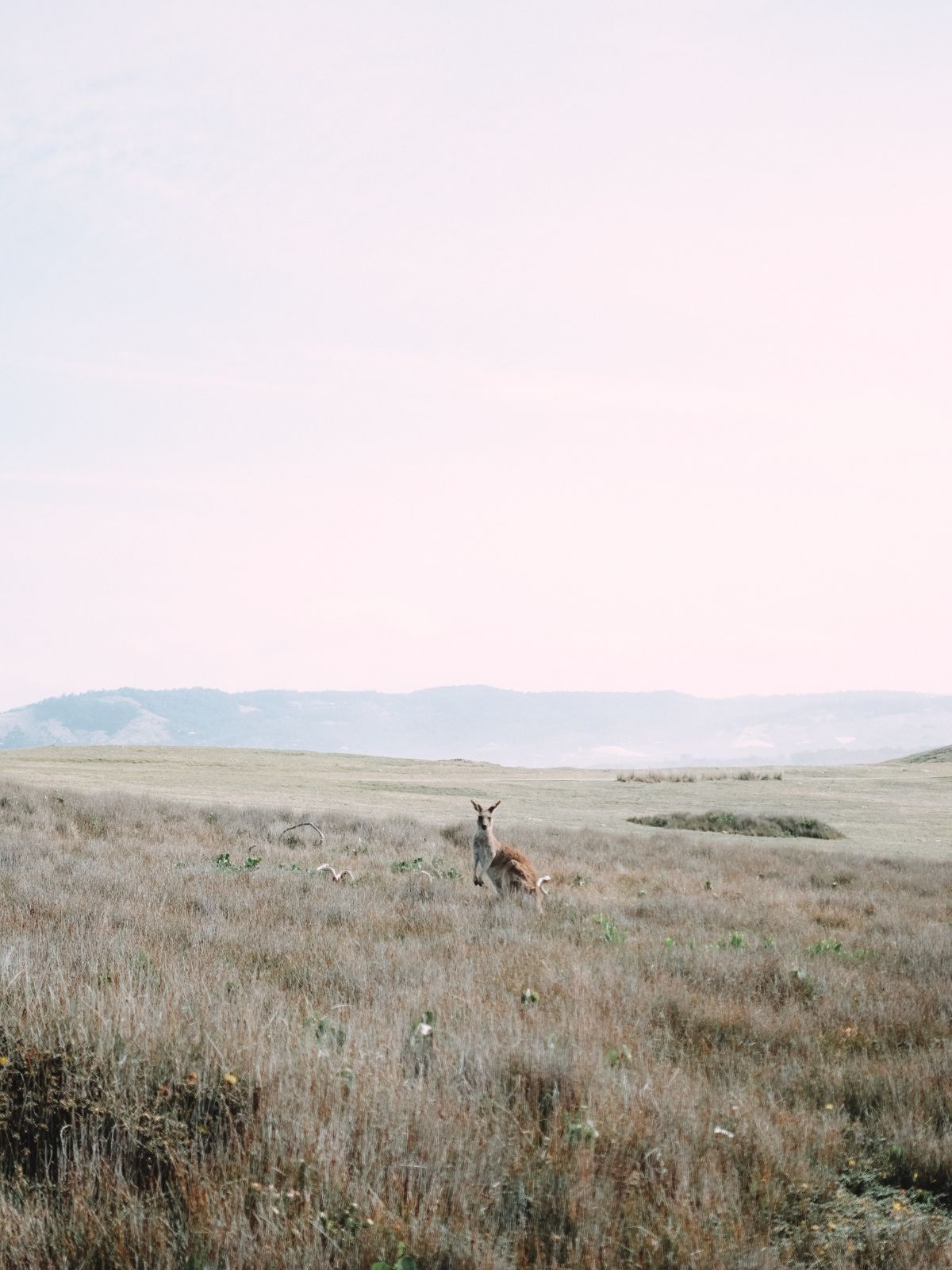Angora is a long, silky fibre made from the soft coats of angora rabbits. The material has fallen heavily out of fashion following investigations highlighting its cruelty, but can angora ever be ethical or sustainable? Emma Håkansson investigates.
How is angora different from other rabbit fur?
Angora is an extremely soft fibre, made from the hairs of a fuzzy rabbit species of the same name. It’s delicate, and must be very carefully washed. Similarly named angora goats are also exploited for mohair. Unlike rabbit fur that’s used to make coats, vests and fluffy keychains, angora hair is not attached to the animal’s skin, so you might assume that rabbits aren’t killed in the angora process. But, as we’ll explore, rabbit fur and angora production are not all that different.
Rabbits are playful, social and inquisitive individuals who roam natural habitats including forests, deserts, wetlands, woodlands and meadows if not domesticated. Rabbits bond by mutually grooming each other. They have a strong sense of smell and are highly sensitive, which means their exploitation in the angora industry is likely to be very distressing for them.
In the angora industry, rabbits are confined to tiny cages
Kept in tiny wire cages, these naturally clean animals are often made to live amongst their own waste and the smell of it, with urine-soaked floors beneath their cages causing severe eye irritation and infection. Angora rabbits already face a higher risk of health problems and infections because of selective breeding for fluffiness, which often comes at the expense of their wellbeing.
Just as the majority of farmed rabbits are killed in China, an estimated 90% of angora comes from China too, where there are no national animal welfare laws covering the protection of all species (though some non-binding guidance has been introduced in recent years). Argentina, Chile, the Czech Republic and Hungary are other notable producers, which also have poor welfare laws.
Rabbits are gregarious and usually live in large families, but in the angora industry and on most rabbit farms, they are caged individually. Even in European countries considered to have higher welfare standards, rabbits are legally offered just an A4 sheet of paper’s worth of space, despite their natural tendency to roam across hundreds of metres each day—some have even been recorded travelling tens of kilometres. There is nothing to comfort, warm or entertain rabbits inside these cages.
How is angora taken from rabbits?
Fur is ripped from rabbits’ skin
For a long time, the fashion industry was blissfully unaware of how angora was harvested. Over the past decade, that has changed, leading a large array of mainstream and luxury businesses to ban angora, including Selfridges, Calvin Klein, ASOS, Gucci, Valentino, Farfetch, and many others.
These brands banned angora following investigations that showed rabbits being strapped down to tables—their front and hind legs pulled in opposite directions—while workers ripped their fur out from their skin. The rabbits shrieked out in pain and terror. As prey animals who instinctively flee when something seems unsafe, rabbits will find being trapped while subjected to such pain extremely mentally distressing.
Some brands claim to source angora from countries with higher welfare standards, but further investigations have shown that the violent treatment of rabbits is widespread, with similarly disturbing scenes documented in the French angora industry, too. The same cruelty has been documented time and time again—and as recently as 2020.
Angora rabbit shearing isn’t the ethical solution it’s pitched as
Angora is ripped from rabbits because it maintains the profitable length of the fibres, but some brands now state that they source shorn angora, which is a little shorter and slightly less soft, but is supposedly ethical. For instance, Australian brand Olga de Polga refers to its angora sweaters as “cruelty-free” because its angora is shorn.
While shearing eliminates the obvious cruelty of ripping fur from the skin of rabbits, this change of practice does not make angora production ethical. There is no legitimate certification to ensure the welfare of angora rabbits. What’s more, rabbit factory farms that have been deemed “humane” by third-party auditors have still been found to rip fur from rabbits. In these facilities, rabbits were also confined to barren wire cages, pulled from them by their ears. Some documented ‘humane’ farms did shear the animals, but did so while standing on their ears, or tying them with rope, hung by their forelimbs from the ceiling while shearing was completed. Not the ethical alternative the industry promised.

Angora fibres in a basket, ready to be spun into yarn
What happens to the angora rabbits after all this?
Angora rabbits are deemed unprofitable to the industry when they reach just two years old, at which point they are slaughtered, and their flesh is sold for meat. This is true regardless of whether rabbits are plucked or shorn during their short lives. Rabbits can live for as long as twelve years both in nature and as companion animals to humans.
That rabbits are viewed as both a pet and a commodity for the sake of fashion highlights our hypocrisy and lack of consideration for how animals are treated in the creation of our clothing.
The environmental impact of angora
The factory farming of rabbits, as with all factory farming, has a significant environmental impact. The same ammonia emissions from animal waste that cause eye infections in rabbits can also lead to eutrophication. Eutrophication is a process that can cause ‘dead zones’ in waterways surrounding these factory farms, suffocating and killing aquatic ecosystems and species.
Additionally, because angora is so expensive, it is frequently blended with lamb’s wool. Wool from sheep not only comes with its own ethical problems, but a significant climate and biodiversity impact.
How angora harms humans: causing cruelty leads to suffering
Have you ever considered the people whose job is to pluck and shear rabbits? How do they cope with such a brutal job? Research has shown that those who work in supply chains exploiting and slaughtering animals are more likely to face mental ill-health.
In fact, slaughterhouse workers often face perpetration-induced stress disorder, which shares symptoms with PTSD. It has been described as one of the “psychological consequences of killing”. Moving fashion beyond animal exploitation, then, would also benefit people.
Alternatives to angora
As brands are moving beyond angora, it’s much less widely available, and that’s also thanks to a range of more ethical and sustainable alternatives that look and feel similar without cruelty. Here are a few options to consider:
- Tencel, though not fluffy like angora, has a soft and silky finish, and similar thermo-regulation properties, making it an ideal switch come wintertime.
- Organic cotton is a naturally soft fibre that’s often used in knitwear. Brushed organic cotton (which is usually woven) is another great option if you’re after that fuzzy texture.
- A range of recycled or plant-based fur alternatives such as KOBA and Savian are increasingly available. It’s important to note that some of these novel materials contain plastic, and most lack the life cycle analyses and detailed scientific work needed to demonstrate exactly how much less impactful they are than angora or other animal-derived furs.
- And finally, with so much quality knitwear having already been made over the years, it’s likely that what you’re looking for might already be out there. So try shopping vintage and second-hand for your next winter warmer.




















